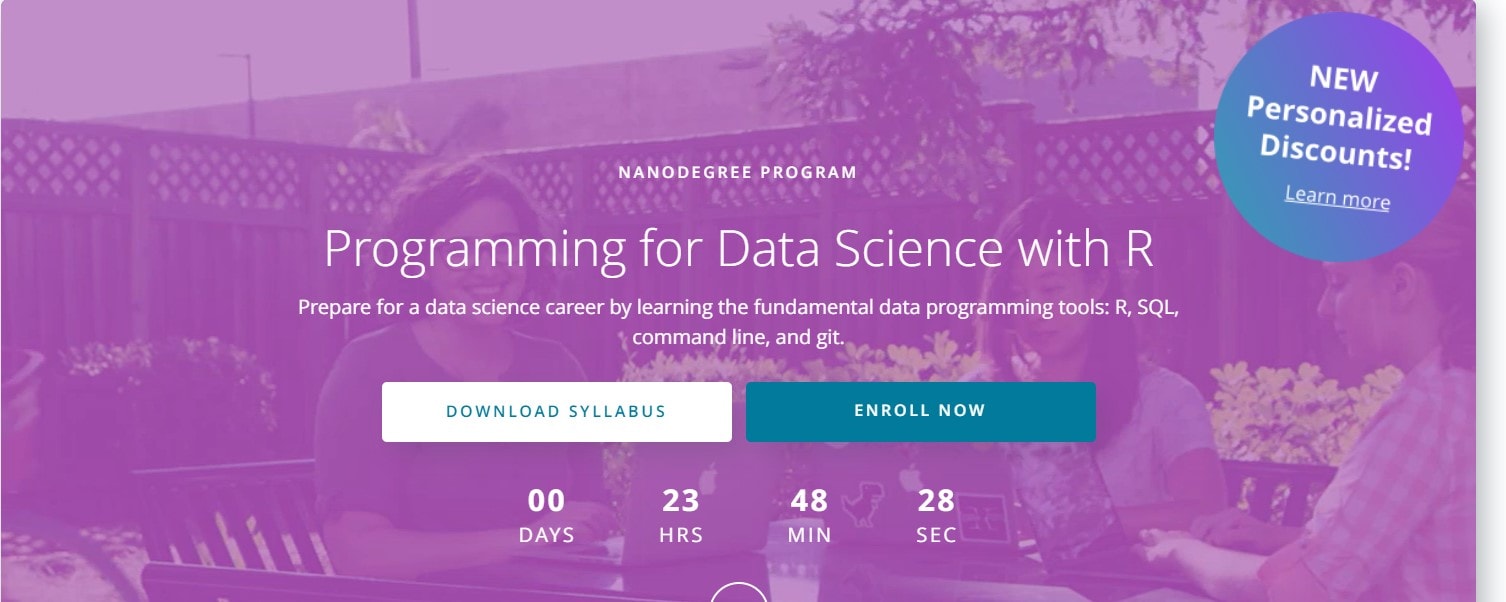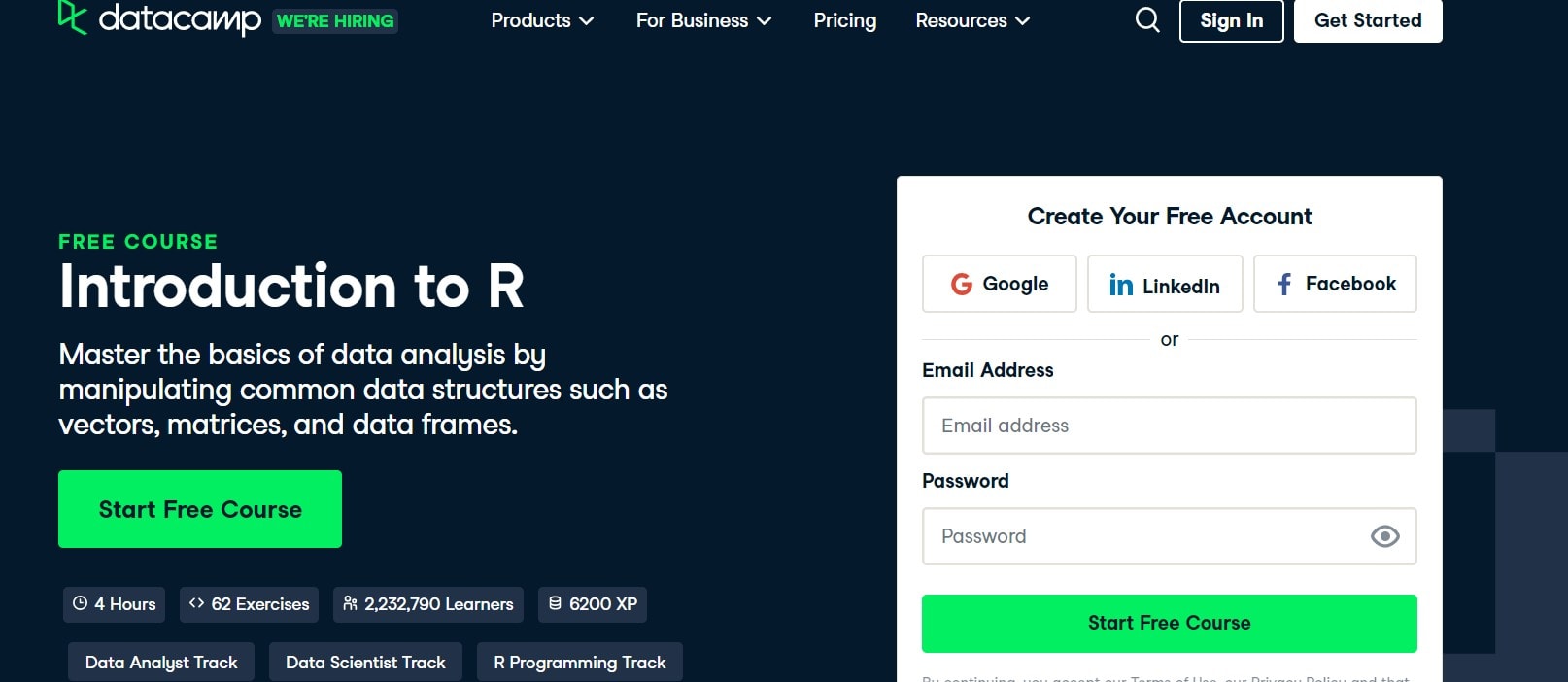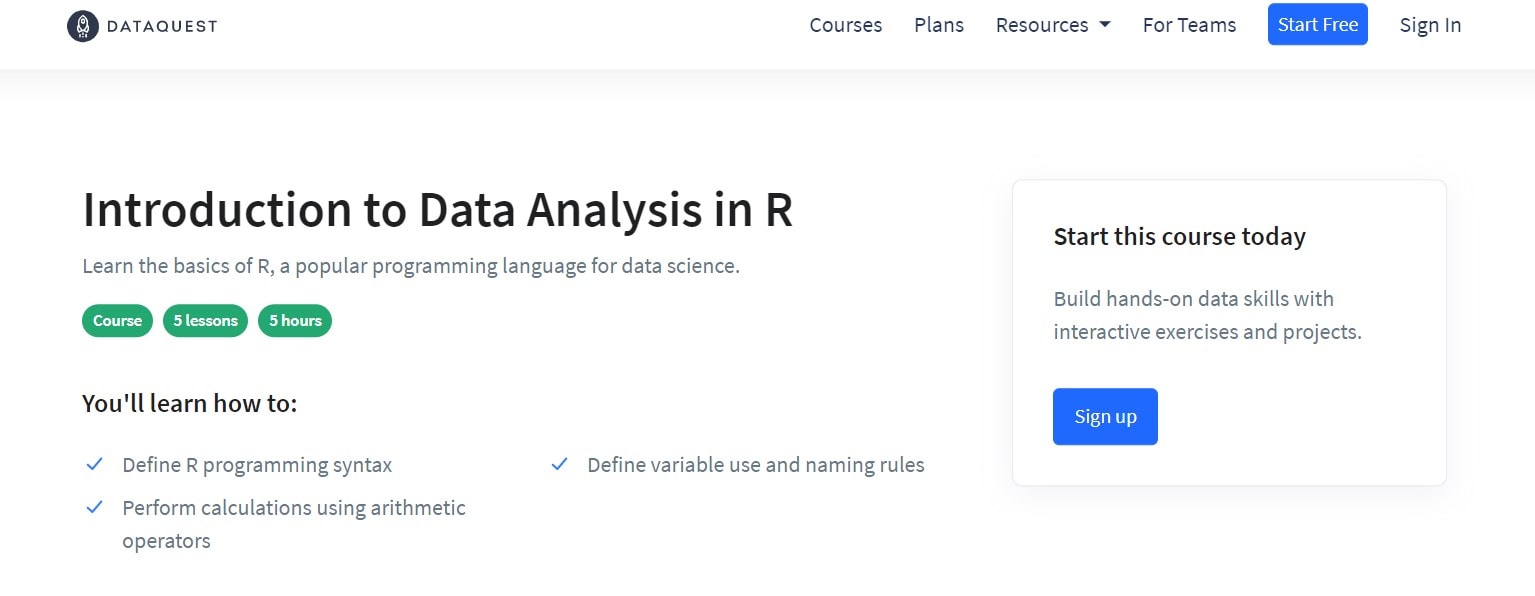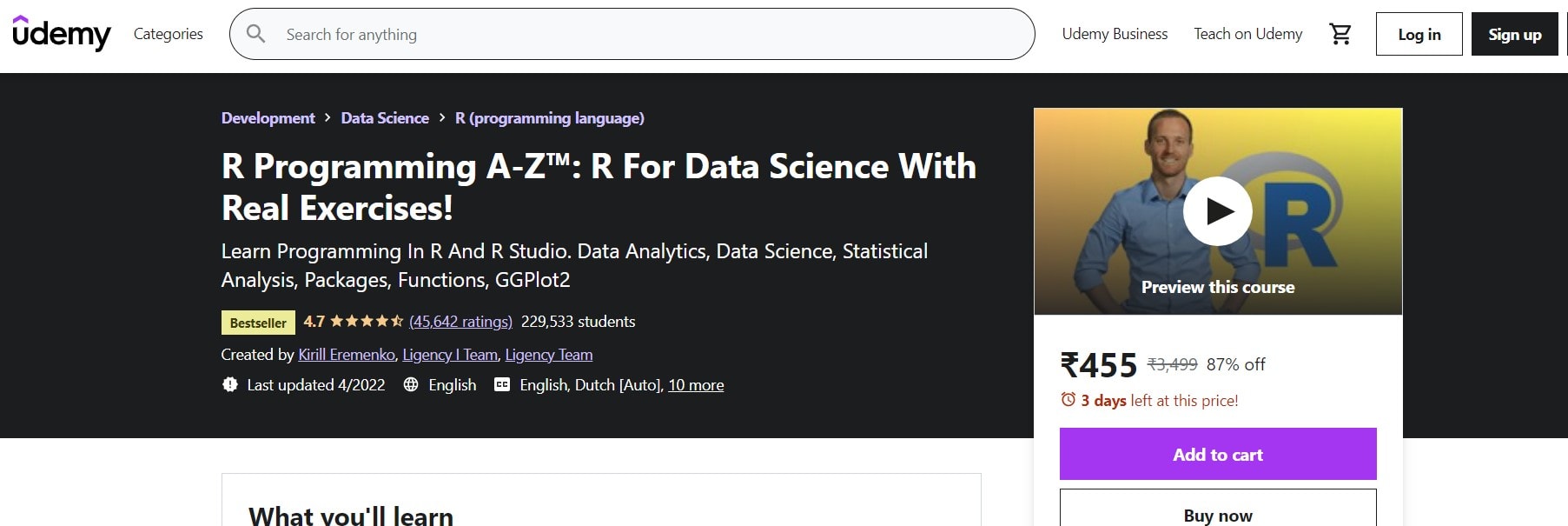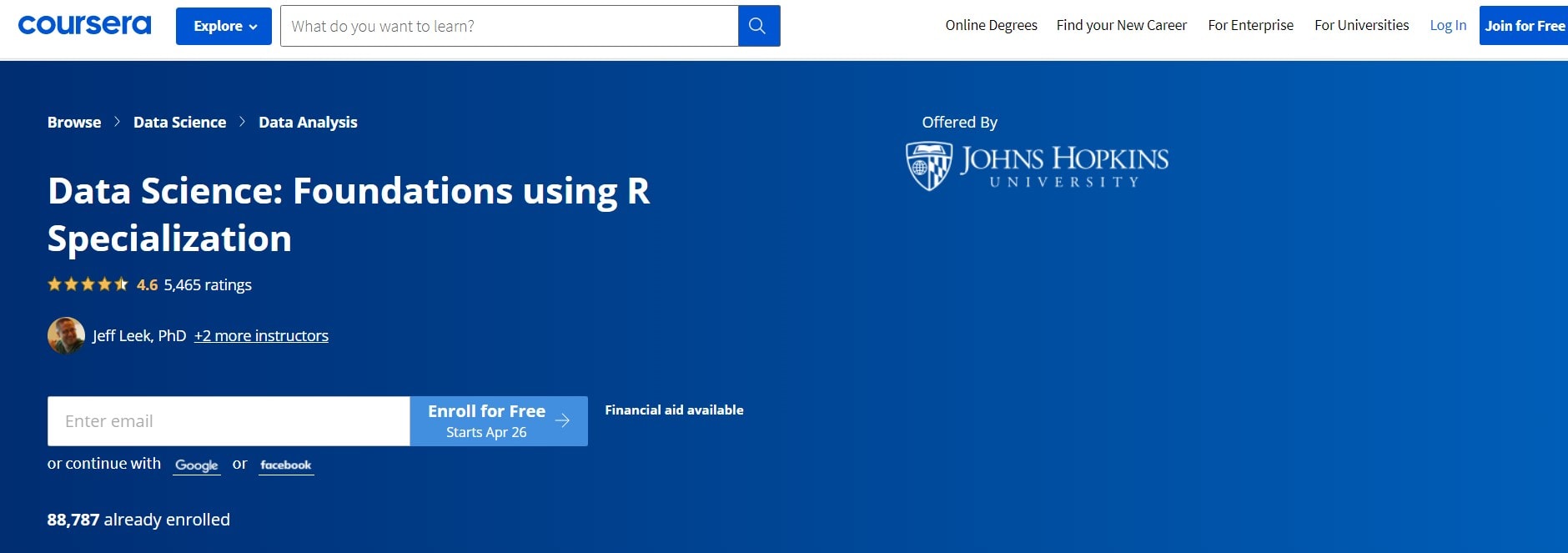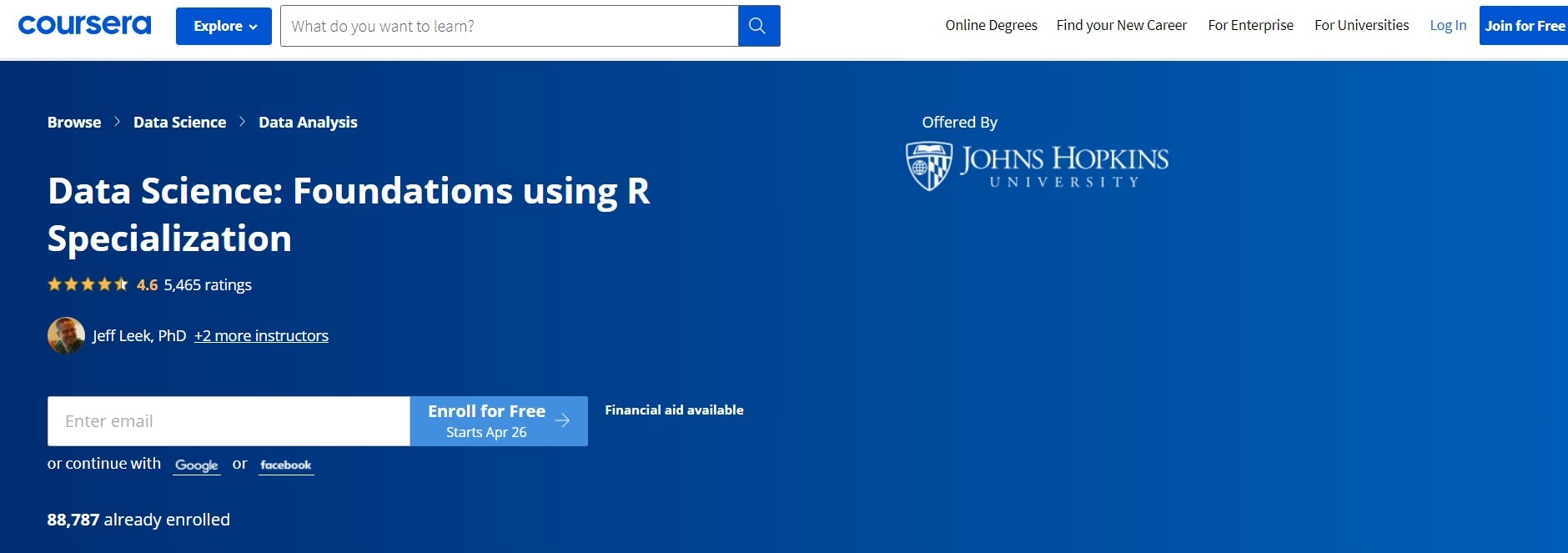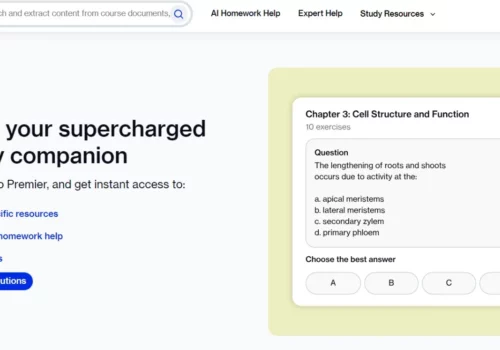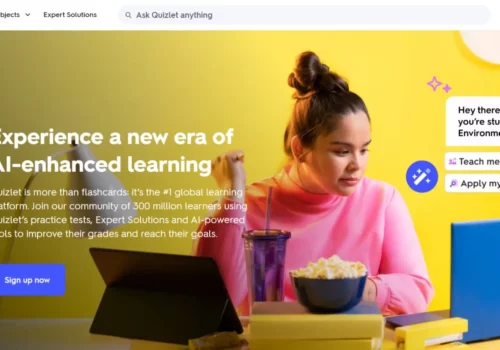Best R Programming Courses to Learn Online for 2022
R is statistical computing, data analysis, and visualization computer language. While it is not as popular as Python, the language is nevertheless fascinating and fast, making it ideal for accomplishing complex jobs.
Without a doubt, R is utilized by an increasing number of data analysts and business analysts worldwide. Thus, mastering R is critical if you wish to pursue a lucrative job in data science or machine learning.
R has a simple syntax in comparison to other computer languages. As a result, self-study is not very difficult. By enrolling in a few high-quality online courses, you may quickly master the language.
This does not mean that you can enroll in any random online course. The majority of online courses claiming to teach the R programming language are a money-making scheme. You’re unlikely to get much knowledge from them.
I will assist you in resolving the issue. This article will highlight just the best R programming courses that I have discovered to be beneficial in developing your practical abilities. You can then choose the course that best suits your needs and begin learning immediately.
Things You Should Know
Prerequisites
There are no prerequisites for most R programming courses. Anyone can take a course at any time. Prior experience with other programming languages is essential (Python, C++, JavaScript, etc.).
List of Best R Programming Courses 2024
1. Programming For Data Science With R
This Udacity Nanodegree program is unquestionably one of the greatest options for learning R for data science.
Along with the essentials of R, you’ll study SQL (for database management) and Git (for version control). Upon completion, you will have acquired critical skills that will enable you to successfully pursue a career in data science.
Course Content
There are three sections in this program:
1. Introduction to SQL – The first section will provide an overview of SQL. You will gain a solid understanding of the principles of this structured query language, including SQL commands, JOINs, Aggregations, and Subqueries.
Following that, you’ll learn how to use SQL to address real-world business challenges.
2. Introduction to R Programming – The second portion will walk you through the R programming language’s fundamental principles, including variables, control flows, and functions.
In the second section of the course, you will learn how to visualize data using ggplot2.
3. Introduction to Version Control – The final section will demonstrate how to use Git to manage your project’s version control, share it with others, and cooperate with other professionals. All of these abilities are necessary for both data scientists and programmers.
Numerous assignments will be assigned in each of the three courses, including tests and a real-world project. For instance, you will use R to collect, analyze, and visualize data from three US cities’ bike-share programs.
Completing these activities will allow you to put what you’ve learned into practice and gain valuable hands-on experience.
According to Udacity, you should spend ten hours per week on the program and expect it to take three months to complete.
The proposed rate of learning may be too fast for some. The curriculum, however, is self-paced. You can then create your own study timetable. Bear in mind that the more time you require, the greater your tuition rates will be (see below).
Pricing
Udacity’s pricing approach is subscription-based. Tuition for this program is $399 per month, but you may purchase a three-month bundle to reduce the cost by 15% to $339 per month.
That is not all. You can create an account (like I did in the section below) to gain access to personalized or account-based discounts.
These discounts might reach up to 75%. As a result, you can enroll in this top-notch program for as little as $100 or less every month.
2. Datacamp’s R courses
Datacamp is a data science education platform that takes an unconventional approach. Rather than instructing students via video sessions, Datacamp employs gamified interactive learning to create a more enjoyable learning environment.
This method is outstanding at retaining my interest in learning. Thus, if you’ve taken several R programming classes but quickly became bored, you might want to give Datacamp a try.
Course Content
In addition to R courses, Datacamp offers numerous data science courses, including but not limited to
- An Introduction to R
- An Introduction to Statistics R
- Visualizing data in R
- Analysis of Time Series in R
- Scraping the web with R
- A brief introduction to R for Finance
All courses will be organized by skill track, including R Programming, Data Manipulation, and Marketing Analytics. These skill tracks will assist students in completing the courses in the correct sequence.
You will read the instructions and complete the tasks using the web-based integrated development environment. If you become stuck, you can either take a hint or request that the platform reveals the solutions for you. You will typically complete each course in 4-6 hours or less.
After completing a few classes, you can begin working on real-world projects. These assignments will assist you in synthesizing your knowledge and gaining an understanding of real-world data science tasks performed by data science experts.
According to my observations, the course content and projects are suitable for beginners. They will assist you in progressively building your abilities and confidence. However, the course content is not particularly in-depth, and the assignments are not particularly demanding, especially in comparison to those offered by Udacity.
As a result, Datacamp will accelerate absolute beginners to the intermediate level and then stop. If you actually want to master a subject, you will need to enroll in a course offered by another supplier.
Regardless of its shortcomings, Datacamp is unquestionably worth subscribing to. Absolute beginners can greatly benefit from Datacamp’s engaging approach and comprehensive curriculum.
If you complete all Datacamp courses, you will have mastered the fundamentals and will be confident to begin your data science journey.
Pricing
Like Udacity, Datacamp charges subscribers a monthly fee. The following are the plans from which students must select one (billed annually).
- Premium – starting at $12.42 a month
- Team – $25 monthly
The Standard package includes unlimited access to the platform’s 300+ courses (R, Python, Scala, and more), as well as 80+ projects and Tableau, Power BI, and Oracle training.
The Premium plan is more than adequate for the majority of students interested in learning R programming.
Please keep in mind, though, that Datacamp subscriptions are regularly on sale (at least once per quarter). During that time period, the Premium plan may cost less than $5 per month.
If you’re still on the fence about whether Datacamp is right for you, I recommend creating a free account to access the first lesson of each course for free.
3. Dataquest’s R Courses
Dataquest is Datacamp’s chief competitor. The platform takes the same interactive learning technique as the previous one, which provides students with an immersive experience.
As a result, if you are a complete beginner, Dataquest’s courses will be quite valuable.
Course Content
Dataquest will provide dozens of R programming classes beginning in December 2021. These are organized into skill routes, which create a logical curriculum that allows students to move easily.
Currently, there are five R programming skill paths available:
- Data Analyst in R – in this course you will learn the fundamentals of R programming and how to apply them to data analysis.
- Data Visualization with R – You will learn how to visualize data with R in this skill path.
- Statistics and Probability with R – This skill path covers the fundamentals of probability and statistics (hypotheses, distributions, Bayesian inference). You will then utilize R to perform statistical analysis, test hypotheses, and manipulate probability density functions.
- APIs and Web Scraping with R – This final skill pathway will explain how to gather and analyze data using APIs and the web.
By and large, Dataquest’s curriculum is less diverse than Datacamp’s. However, Dataquest is actively expanding the curriculum at the moment. As a result, you may anticipate the release of further courses in the near future.
The educational experience is very similar to that of Datacamp. To begin, you will read the text instructions and perform the code assignments using the web-based integrated development environment.
Additionally, I discovered that Dataquest’s classes are roughly as in-depth as Datacamp’s, which means that you’ll need to find another course to get advanced R programming skills.
Dataquest, on the other hand, spoonfeeds trainees significantly less than Datacamp. You’ll have more possibilities to code everything right from the ground up. Dataquest’s pricing structure is basic. Premium plans begin at $33.25 per month (paid annually) or $49 per month (billed monthly). After subscribing, you’ll have access to all data science courses on the platform, including those in R, Python, and SQL.
Dataquest, in my experience, offers discounts virtually every month. These savings can be as high as 50%, bringing the monthly subscription rate down to $16.5.
Additionally, you can establish an account to test out several lessons for free.
4. R Programming By Kirill Eremenko
Kirill Eremenko’s two Udemy courses will walk you through the fundamentals of R programming and demonstrate how to use the language in statistics and data research.
I’ve taken several of his classes and love his straightforward explanations of issues. As a result, I have no hesitation in recommending him to you.
4.1) R Programming A-Z™: R For Data Science With Real Exercises!
The first course in the series will cover the fundamentals. The following is a summary of the material covered in the course.
- Fundamental Principles of Programming (Variables, Operators, Control Flows)
- Fundamentals of R Programming (Vectors, Functions, Packages)
- Matrices: A Deep Dive (Operations, Visualization, etc.)
- Frames of Data
- GGPlot2’s advanced visualization
- Detailed Solutions to Homework
The video content totals 10.5 hours in duration. Apart from the video sessions, Kirill has included a variety of exercises based on real-world circumstances to aid with your comprehension of the practicals.
For instance, you will use R programming to examine financial statements and box office data from films. After completing the assignments, you can view the video solutions, which will walk you through each step in depth. As a result, you will have access to all of the learning resources necessary to master R.
Reviews: 4.6/5.0, Students: 221000+
4.2) R Programming: Advanced Analytics In R For Data Science
The second course focuses mostly on data analytics in R. The following are the major topics covered in this course.
- Preparation of Data (Learn to prepare data for analysis in R)
- Imputation Using the Median (to replace missing data)
- A deep look into R’s Lists (Date-Times, Import data into R, Create a Timeseries Plot, etc.)
- Family of Functions “Apply” + Nesting Functions
This course is significantly shorter than the first (just 6 hours in length) due to the fact that it covers far fewer topics. Nonetheless, the instructor will delve deeply into each idea and offer you real-world case studies to aid improve your comprehension.
Both courses are, on the whole, beginner-friendly. If you’re searching for a reasonably priced R programming course, I believe this series is worth taking a look at.
Reviews: 4.6/5.0, Students: 53000+
5. Data Science: Foundations Using R Specialization
If you’re seeking more formal education, this Coursera specialization from John Hopkins University might be for you. You will be guided through data science tools and approaches with R by three biostatistics academics.
According to the course description, there are no requirements for this program. Student reviews, on the other hand, say differently.
Prior to enrolling in this program, it is recommended that you have some programming experience.
Course Content
The following minor courses are part of this specialization:
1. The Data Scientist’s Toolbox – Participants will learn how data scientists transform data into insights, as well as how to use essential tools, such as Git and RStudio.
2. R Programming – In essence, you will learn the fundamentals of R programming in this course.
The first thing you need to do is set up your statistical programming environment. On the next page, you will learn about programming concepts, including functions, packages, and best practices.
3. Getting and Cleaning Data – During the third course, students will learn how to gather information from different sources, such as the web, APIs, and other sources.
You will then be able to understand how clean and polished data can benefit data analytics.
4. Exploratory Data Analysis – Exploratory techniques for analyzing data will be covered in the fourth course, which will benefit the development of complex statistical models and the evaluation of hypotheses. R plotting systems and data visualization principles will also be introduced.
5. Reproducible Research – The last session will cover the tools and procedures necessary to generate reproducible data analysis reports. You will have a better understanding of why repeatability is helpful to the community.
In general, you will study R programming and gain an understanding of how to conduct professional data analysis. The program is thorough. You may find that you do not require another R programming course at all.
John Hopkins suggests spending eight hours each week on the courses, which will take five months to finish.
However, because the program is self-paced, you can change your study schedule as needed if you decide the recommended pace is too fast.
You can do a free audit of the program. Alternatively, you can enroll in a whole course for $49 per month, which includes graded assignments and a digital certificate.
6. Data Visualization & Dashboarding with R Specialization
This Coursera specialization will walk you through the process of visualizing data and building a powerful dashboard using R. As with Course 4, you will receive instruction from a John Hopkins University senior instructor.
Course Content
One capstone project and four minor courses make up this specialization:
1. Getting Started with Data Visualization in R – The first course will teach you the fundamental skills required to visualize data in R. You will master the essentials of R programming, including basic R syntax, functions, and data frames.
Following that, you’ll learn how to import data into R, edit it using a variety of tools, and conclude the course by making simple reports.
2. Data Visualization in R with ggplot2 – The second course is entirely dedicated to ggplot2. This package will be used to view and polish data using a variety of methods (including a third-party vector graphics editing software.)
3. Advanced-Data Visualization with R –The third course will pick up where the second course ended. By examining other R packages, you will gain a better understanding of the data visualization possibilities available. Later in the course, you will develop spatial maps in R and animated figures.
4. Publishing Data Visualization in R with Shiny and FlexDashboard – The last lesson will cover how to use Shiny to visualize data and construct interactive dashboards to help the audience gain insights.
5. Capstone – This large-scale project will allow you to put what you’ve learned into practice. You will learn how to use R to construct a range of visualizations to convey a captivating story using real-world data.
In contrast to the other courses on this list, this one concentrates exclusively on data visualization using R. Apart from the video sessions and readings, the curriculum includes multiple projects and a large-scale project that allow you to put your newly acquired skills to the test.
As a result, if you sense you are still lacking in this area, you may want to consider pursuing this expertise.
In terms of pace, you should expect to spend five hours each week on the course, which will take four months to finish. However, if you are a quick reader, I believe you may complete it much sooner.
This is because the video courses are brief and most of your study time is spent on the readings.
Auditing all minor courses are completely free. Alternatively, for $49 per month, you can subscribe to the whole program.
Coursera Plus
Given the breadth of this article’s coverage of Coursera specialties, you may be interested in more than one program. If such is the case, I strongly advise you to subscribe to Coursera Plus.
Coursera Plus will provide complete access (not just auditing) to the Coursera platform for more than 3000 courses and specializations. You can then enroll in each program quickly, without having to pay separate program membership costs.
Additionally, Coursera Plus memberships begin at $399 per year (or $33.25 per month on average), which is less expensive than individual subscriptions ($39-$79). As a result, Coursera Plus appears to give better value for money.
If you are a diligent student, subscribing to Coursera Plus is a no-brainer.
Quick Links:
- Coursera Pricing: How Much Do Coursera Courses Cost?
- Coursera vs Lynda| Which One Is The Best?
- Udacity Vs Coursera| Are Udacity Courses Better Than Coursera?
- Udemy vs Treehouse: Which One Is Right For You?
Conclusion: Best R Programming Courses 2024
That concludes our list of the top R courses to take this year and the best R certifications to pursue. I would recommend that you pursue a profession in data science or maybe bioinformatics by selecting from this list.
The majority of courses are highly graded and require no prerequisites, which should inspire you to go on your path. Once you’ve gained confidence and studied properly, you may wish to become certified. For more information, you can check out R certificates.
Once you’ve established yourself as an R professional and are ready to apply for jobs, you can prepare for an R interview in order to land your dream data science job.
If you know of any additional highly rated courses that would benefit the R community, please post them in the comments section below.

